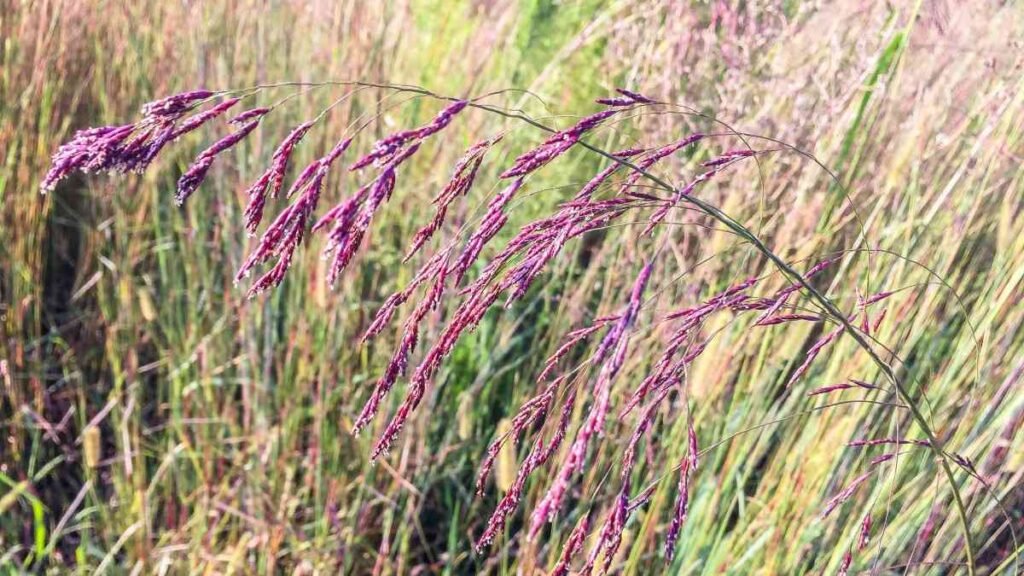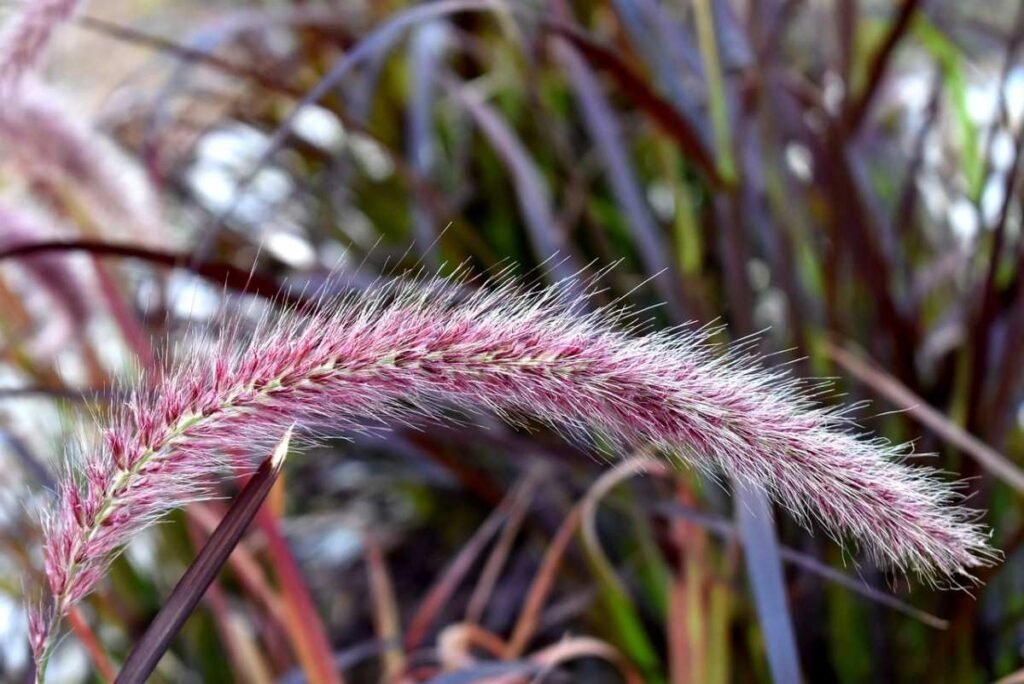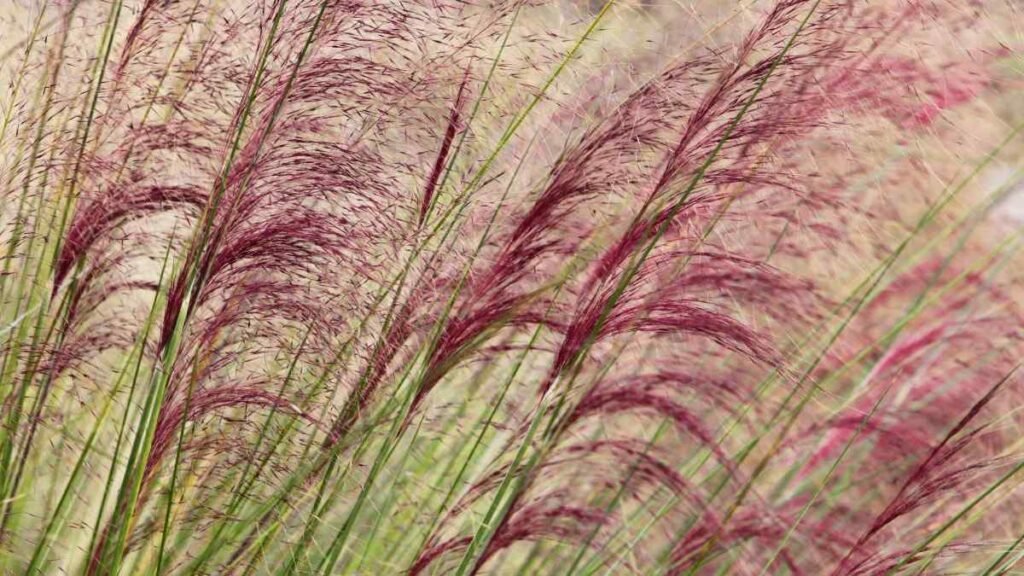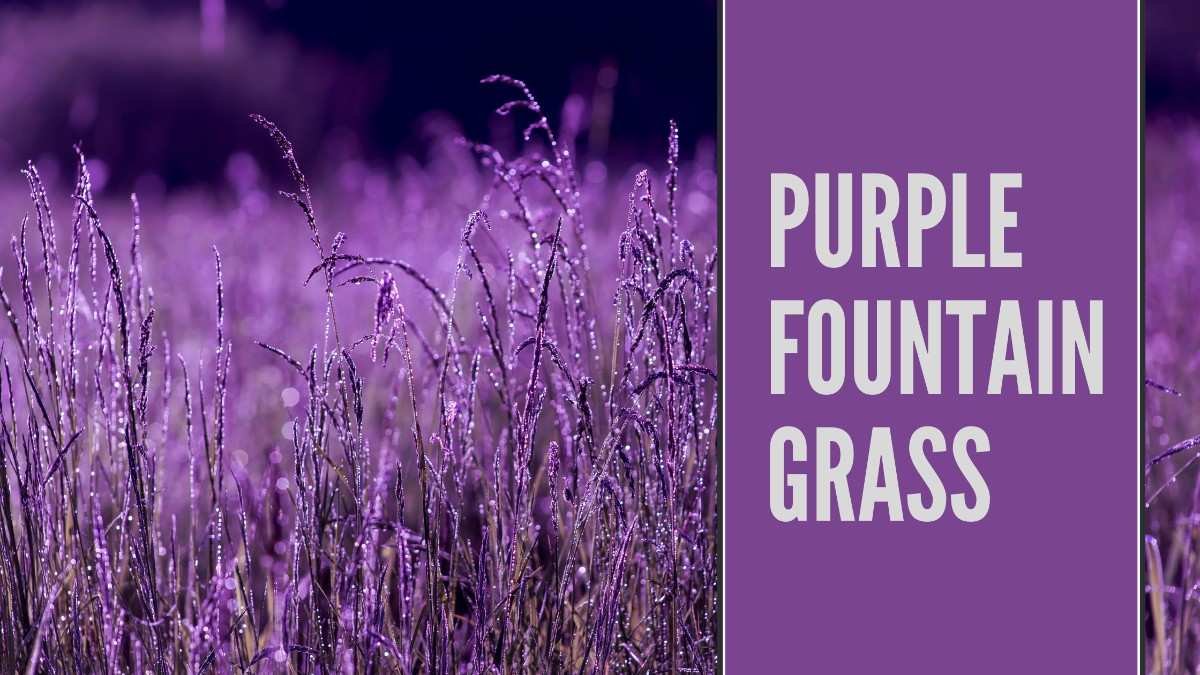In a garden, every breeze brings a wave of deep purple colors that sway elegantly, making a beautiful, ever-changing scene. Purple fountain grass plant, known scientifically as Pennisetum setaceum ‘Rubrum’, offers just that.
Both novice and professional gardeners love this decorative grass because of its amazing look and the low upkeep required.
In this guide, we’ll go over all the details of planting and growing purple fountain grass so that these beautiful plants do well in your yard.
The information in this complete guide will help you make a lush and colorful garden, whether you want to add a pop of color or make a focal point.
What is Purple Fountain Grass Plant?
Purple fountain grass (Pennisetum setaceum ‘Rubrum’) is a warm-season decorative grass known for its dark purple foliage and elegant, arching flower plumes.
It grows as a perennial in hot places, but as an annual in cooler places because it doesn’t like cold. Any garden or landscape design will benefit from this unique plant in any size given its stunning color and shape.
Characteristics and Benefits
Appearance: The leaves of purple fountain grass are narrow and red to purple. In the middle of summer, fluffy flower spikes appear and last until fall. Starting as a rich purple, the blossoms progressively lose their color to become delicate, brown.
Growth Habit: Reaching heights of three to five feet, this covers around two to four feet broad and is very prominent in the garden.
Hardiness: Hardy in USDA zones 9-11; grows annually in colder zones as well. Growing as a perennial, with good care, it may last for several years.
Uses: Perfect for garden borders, mass plantings, container gardening, and mixed bed focal points. It also draws butterflies and birds, therefore augmenting the biological variety of your garden.

Planting Purple Fountain Grass
1. Selecting the Right Location
Picking the right spot for your purple fountain grass is important for its health and growth.
Sunlight: Purple fountain grass needs at least six to eight hours of daily direct sunshine and thrives in full sun. Lack of sunshine might cause poor development and less colored leaves.
Soil: This grass grows best in dirt that drains well and has a pH between 6.0 and 7.5. It can grow in a range of soils, but it does best in fairly rich soil.
2. Preparing the Soil
Before planting, prepare the soil to provide a healthy environment for your purple fountain grass.
Testing Soil: Find its pH and nutrient concentration. If needed, add lime to raise the pH or sulfur to reduce it.
Amending Soil: Adding organic matter like compost or well-rotted dung can help the soil drain better and grow more plants. This supplies vital nutrients and improves soil structure.
Clearing the Area: Get rid of any weeds, rocks, or other trash that is in the growing area. This makes it easier for your grass to get nutrients and water, so it gets off to a better start.
3. Planting Steps
Timing: Once the last frost date has passed, plant purple fountain grass in the spring. This allows the grass lots of time to grow before summer’s heat.
Digging the Hole: Make a hole that is twice as deep and twice as big as the plant’s root ball. In this way, the roots can spread out easily and grow fast.
Planting: Put the plant in the hole such that the top of the root ball is level with the ground. Fill the hole with soil, then gently firm it around the roots to get air pockets out.
Watering: After planting, give the plant enough water to help settle the soil and start root development.
Caring for Purple Fountain Grass Plant
1. Watering
The health of your purple grass depends on appropriate watering.
Initial Watering: Frequent watering of recently planted grass will keep the soil wet but not soaked. This encourages the plant to develop robust roots.
Established Plants: Purple fountain grass is quite drought-tolerant once grown. Deeply but sparingly water to let the soil dry out between watering times. This improves drought tolerance and stimulates strong root development.
2. Fertilizing
Spring Feeding: For the growth season, use a balanced, slow-release fertilizer in the spring. Apply according to the manufacturer’s instructions.
Mid-Season Boost: Giving the plant an extra feeding in the middle of summer can help keep the leaves bright and encourage blooming.
3. Pruning and Maintenance
Cutting Back: In late winter or early spring, cut back the old foliage to about 6 inches above the ground. This keeps the plant from turning too woody and promotes fresh development.
Deadheading: To promote ongoing bloom and keep things neat, remove spent flower spikes.
4. Pest and Disease Management
Problems with bugs and diseases don’t happen very often with purple fountain grass, but they can happen.
Pests: Sometimes the plant becomes infested by aphids and spider mites. Control these bugs with neem oil or insecticidal soap.
Diseases: Root rot and fungus diseases can happen when you water plants too much. To avoid these problems, ensure correct drainage and steer clear of soggy environments.

Propagating Purple Fountain Grass
1. Division
The division is the most common method of propagating purple grass.
- Timing: Divide the purple grass in early spring or late summer when the plant is actively growing.
- Digging Up: Carefully dig up the entire plant, taking care not to damage the root system.
- Splitting: Use a sharp knife or spade to divide the root ball into smaller sections, each with several shoots and roots.
- Replanting: Plant the divisions in prepared soil, following the same steps as for initial planting. To help the new plants get established, water them well.
2. Seeds
While less common, growing purple fountain grass from seeds is also possible.
- Seed Collection: Collect seeds from mature flower spikes in the fall. Before putting them away, let them dry entirely.
- Sowing: Sow seeds indoors in late winter, about 8-10 weeks before the last frost date. Use a seed-starting mix and maintain consistent moisture and temperature.
- Transplanting: Plant seedlings into separate pots once they are big enough to manage. Harden them off before planting outdoors after the last frost.
Landscaping with Purple Fountain Grass
1. Design Ideas
Purple fountain grass adds beauty and texture to various garden settings.
- Borders and Edges: Use purple fountain grass to create striking borders along pathways and garden beds. Its height and color provide a visual anchor.
- Mass Plantings: Plant in groups to make an enormous difference. The swaying plumes create movement and interest in large landscapes.
- Containers: Ideal for container gardening, purple fountain grass adds height and elegance to patios, balconies, and entryways.
2. Companion Plants
Pair purple fountain grass with complementary plants for a cohesive and vibrant garden design.
- Flowering Perennials: Combine with flowering perennials like coneflowers, black-eyed Susans, and coreopsis for a burst of color.
- Evergreens: Mix with evergreen shrubs to create year-round interest and contrast.
- Other Grasses: Plant alongside other ornamental grasses like switchgrass or feather reed grass for a textural variety.

Purple Fountain Grass Care In Winter
1. Cold Climates
In regions where purple fountain grass is not hardy, it can be treated as an annual or overwintered indoors.
- Annual Treatment: Simply remove the plants at the end of the growing season and replant new ones in the spring.
- Overwintering: If you wish to keep the grass, dig up the plants before the first frost. Pot them and bring them indoors to a bright, cool location. Water sparingly and avoid over-fertilizing during this period.
2. Warm Climates
In USDA zones 9-11, where purple fountain grass is perennial, minimal winter care is needed.
- Mulching: Apply a layer of mulch around the base of the plant to protect the roots from any unexpected cold snaps.
- Pruning: Cut back the foliage in late winter or early spring to encourage fresh growth.
Final Wording
The Pennisetum setaceum ‘Rubrum’, or purple fountain grass, is a beautiful plant that is easy to take care of and looks great in any yard.
You can enjoy the beauty of this purple perennial grass for many seasons if you know what it needs and follow the instructions for growing, caring for, and spreading it.
With rich fountain grass purple color and graceful presence, it will improve your landscape, whether you want to make a bright border, a dramatic focal point, or a lively container show.
FAQs on Planting and Growing Purple Fountain Grass
1. What type of soil is best for purple fountain grass?
Well-drained soil with a pH between 6.0 and 7.5 is ideal. Amending soil with organic matter can improve drainage and fertility.
2. When should I plant purple fountain grass?
Plant in the spring after the last frost date to give it ample time to establish before summer.
3. How tall does purple fountain grass grow?
It typically reaches heights of 3 to 5 feet with a spread of 2 to 4 feet.
4. Does purple fountain grass attract wildlife?
Yes, it attracts birds and butterflies, adding ecological diversity to your garden.

